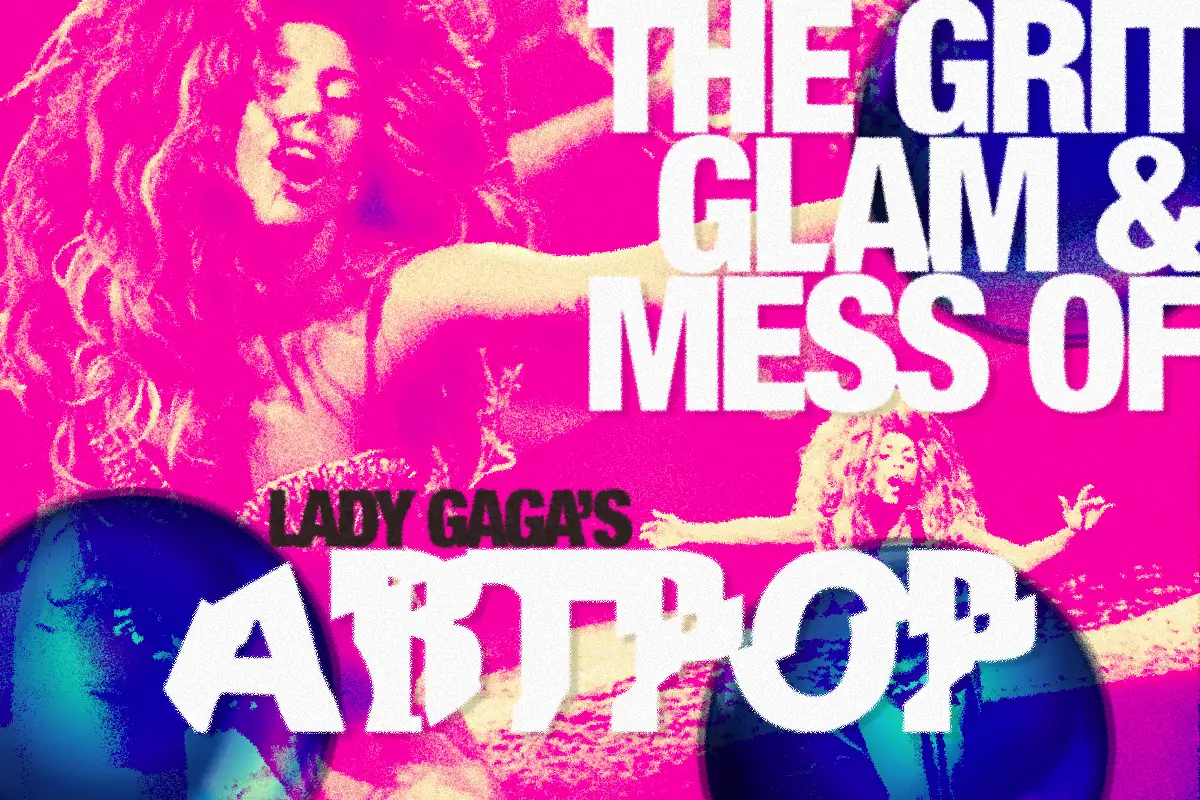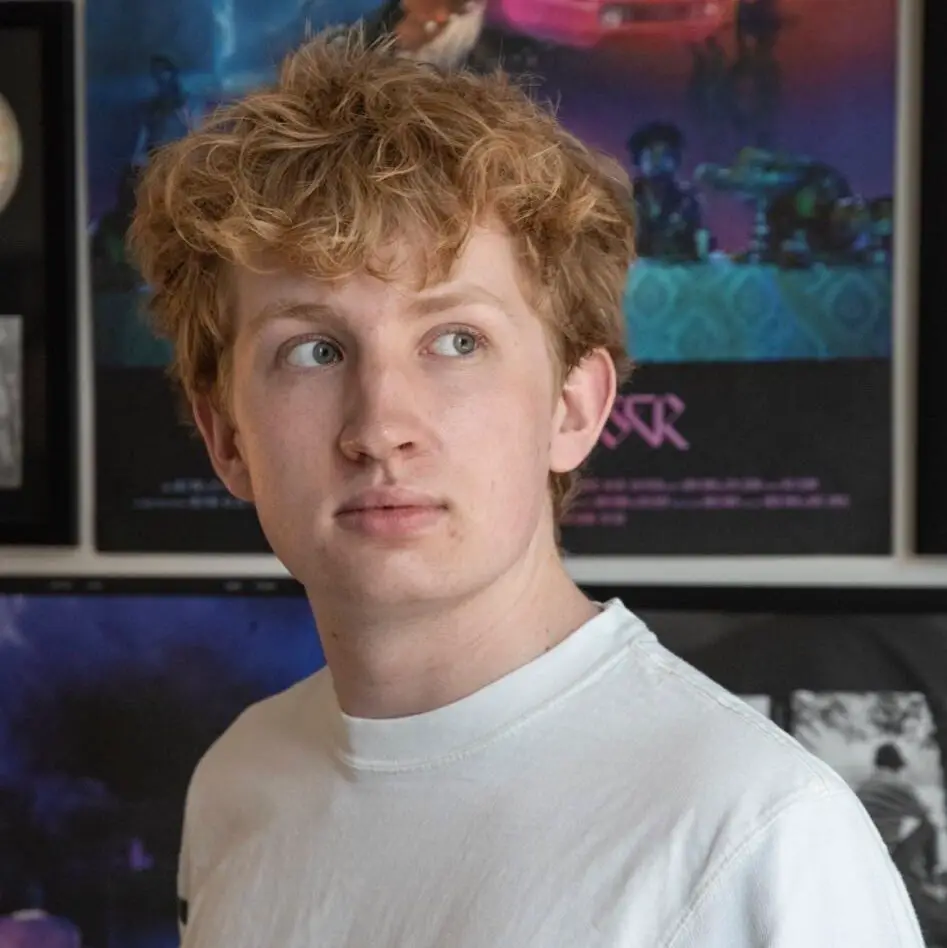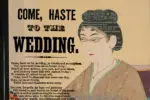“I killed my former and/ Left her in the trunk on Highway 10,” is how Lady Gaga greets listeners on her third studio album “ARTPOP.” In many ways, the album and its respective era redefined the public perception of Gaga. By meticulously “killing” her previous personas, Gaga presented her most daring, flashy and controversial expression of herself to date. Reflecting on “ARTPOP” 10 years after its initial release, the album represents so much more than 15 electronic pop bangers.
At the Montreal stop on the “Born This Way Ball” tour in early 2013, Gaga suffered a hip injury that forced her to cancel the remainder of the tour dates. The time off from performing and undergoing hip surgery allowed her to further develop the songs that would make up her next studio album. “The stage is a place that I started to rely on very much — and the fans and that interconnection — and when it went away I had to find a more spiritual connection with music and art,” she told the BBC’s Miranda Sawyer in 2013.
But despite this physically and emotionally painful rumination stage of her career, Gaga produced some of her most colorful, kaleidoscopic and avant-garde work to date. “ARTPOP’s” lead single “Applause” is in many ways a direct response to her time away from the stage due to her battles with chronic pain inflicted by her injury.
“If only fame had an IV, baby, could I bear/Being away from you? I found the vein, put it in here,” she sings, likening the adrenaline rush of public adoration to a medical cure for emptiness. The song’s chorus is the most direct reflection of her mental state at the time as she repeatedly admits:
“I live for the applause-plause, live for the applause-plause/Live for the way that you cheer and scream for me.”
“Applause” gave the public a taste of what was to come on the full album, with its operatic, electronic “whomp whomps” and echoed percussions aimed to resemble hands clapping. The album’s first track “Aura” is also a prime example of the sprawling sonic makeup of the record. The song begins with fast-paced guitar strums as Gaga sings the first verse. As she finishes delivering the verse, she launches into a melodramatic autotuned evil laugh as alien synths take over.
By today’s standards, songs like “Aura” don’t sound all that dissimilar to the likes of Arca, Rosalía and SOPHIE. But in 2013, Gaga’s loud, clangy EDM-inspired pop was far too wild for the general public’s taste. Artists like ZEDD — who produced several songs on “ARTPOP” — had been successfully making a career out of infusing radio pop with hard-hitting EDM, but when Gaga took a swing, her efforts weren’t received with nearly the same kind of positive response.
Fans claimed that the album was so “infectious and fun, you can’t help but want to strap on a pair of dancing shoes and hit the club.” But some critics thought that “at its best, it sounds like it was creatively directed by RuPaul, Dr. Ruth, and Beavis and Butt-Head.”
The difference in Gaga’s approach lies within her amalgamation of harshly contrasting aesthetics and attitudes.
Gaga’s collaboration with R. Kelly, “Do What U Want,” demonstrates these contrasts found across the album and throughout this period in her career.
“You can’t have my heart, and you won’t use my mind/But do what you want with my body,” she sings. “You can’t stop my voice ’cause you don’t own my life/But do what you want with my body.”
Given Kelly’s long history of sexual abuse with minors, his involvement with the song has aged terribly, to say the least.
Despite the incredibly poor choice to feature Kelly on the song, “Do What U Want” defiantly dismissed the criticisms that Gaga has faced her entire career. Especially in the beginning stages of her career, her body was used as ammunition for public opinion and negative commentary. The lyrics of the song are in fact rooted in feminist ideology, declaring that no matter what may happen to her physical being, no one can take away her heart, mind and voice.
In 2019 Gaga shared a statement about the collaboration, announcing that it would be pulled from iTunes and various streaming platforms. “I made both the song and video at a dark time in my life, my intention was to create something extremely defiant and provocative because I was angry and still hadn’t processed the trauma that had occurred in my own life,” she wrote on X, formerly known as Twitter.
I stand by anyone who has ever been the victim of sexual assault: pic.twitter.com/67sz4WpV3i
— Lady Gaga (@ladygaga) January 10, 2019
What seemed clearly evident amidst all of Gaga’s actions across the album and during the era was that she was singing from a state still very steeped in the pain she’d endured. Despite her flashy attempts to cloak her struggles in sophisticated artistic references, she was really just a 27-year-old woman struggling both physically and emotionally. The subject matter on “ARTPOP” spanned longing (“Gypsy”), loss (“Dope”) and sex (“G.U.Y.“), all of which constructed a conflicting image of a star that the public just couldn’t pin down.
With every public appearance Gaga made, she drastically changed the way she looked — simultaneously making artistic references while also proving to the public that they couldn’t box her into one category. One day she might appear as a ghostly siren, and the next as an androgynous showgirl complete with a mustache. These contrasts that appear on the album, as well as in her presentation of herself, demonstrated the conflicted emotional place she stood in throughout the era.
While it’s true that “ARTPOP’s” soundscape was in fact scattered, the profound quality of the music emerged from those contrasts. To have Gaga professing her desires on “Sexxx Dreams” one second, and then pivot to the rap-led “Jewels N’ Drugs” with T.I., Too $hort and Twista the next created a commentary on what can be considered popular music. Sure, it wasn’t the manicured synth-pop of her first two projects, but the chaotic sound of “ARTPOP” fueled its appeal and impact — and is what continues to be so profound a decade later. To have 15 tracks sound completely different from one another, but maintain a thematic throughline through each is a feat few artists can successfully accomplish.
Less than a year after “ARTPOP’s” release, Gaga teamed up with music icon Tony Bennett and released “Cheek to Cheek,” a collection of 12 jazz standards. Gaga sported larger than life brunette wigs, which starkly contrasted her signature platinum blonde locks, and drew style inspiration from Old Hollywood stars like Ginger Rogers and Ella Fitzgerald. Using “Cheek to Cheek” as an escape, “ARTPOP” was abandoned which prompted many fans to wonder why her arguably best album was left behind as if it ceased to exist.
i don’t remember ARTPOP
— Lady Gaga (@ladygaga) November 11, 2019
The same year that Gaga pulled “Do What U Want” off of streaming services, she referenced the album on X again, this time stating “i don’t remember ARTPOP.” This further proves that in many ways, the “ARTPOP” album and its promotional cycle — including the 2014 artRave tour — was a tumultuous period in the star’s life, and is likely blocked from memory in an effort to avoid reliving it.
But Gaga wasn’t the only person to stop referencing “ARTPOP.” One of the album’s main producers, DJ White Shadow, championed the project after its release and continually teased a “second act” sister project. After several years of mounting anticipation, leaked music and even a petition for Gaga to release the “act II,” DJ White Shadow told fans he was “no longer talking about ‘ARTPOP’” on Instagram earlier this year. The motive behind his abandonment of the project remains unclear, but if his experience making the album was anything similar to Gaga’s, it was likely self-preservational.
As Gaga repeatedly mentioned to interviewers throughout the album’s promotional cycle, “ARTPOP” was more than just music, but rather a way of living. By committing herself so wholeheartedly to conveying the sonic and aesthetic world of the project, she trapped herself within the pain she sang of.
Now 10 years after the album’s release, it’s clear just how pivotal “ARTPOP” was not only for Gaga’s career, but for popular music as a whole. Part of why the album failed to do as well as her previous records is because “ARTPOP” sounded nothing like what was on the radio at the time. Where “Born This Way” aimed to reach consumers with uplifting messages of self-acceptance through palatable electropop, “ARTPOP” focused on rejecting the constraints of modern popular music — styles and structures popularized by contemporaries like Katy Perry and Taylor Swift — to unsettle listeners through abrasive, booming EDM-leaning music that represented the various extremes of Gaga’s personal struggles.
“Making this album was like heart surgery, I was desperate, in pain, and poured my heart into electronic music that slammed harder than any drug I could find. I fell apart after I released this album. Thank you for celebrating something that once felt like destruction,” she wrote on X in 2021 after the petition for “ARTPOP: Act II” went viral.
Today the electronic stylings of “hyperpop” have become fashionable by artists like 100 Gecs, Arca and A. G. Cook — all of whom have only broken into the mainstream somewhat recently. While it wouldn’t be fair to credit Gaga as the sole artist who popularized this louder, harsher and grittier pop sound, “ARTPOP” undoubtedly brought these styles to a wider audience through her mainstream platform.
What continues to stick out a decade later, is Gaga’s wholehearted commitment to reinventing herself as a malleable representation of what forms at the intersection of “art” and “pop.” Afterall, as she said ten years ago, her “ARTPOP could mean anything.”

















